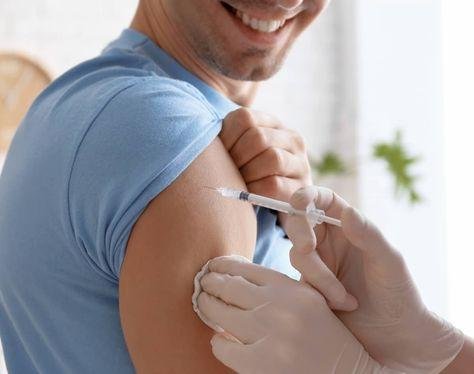ACL Surgery presents an appealing option, offering high-quality care at a fraction of the cost compared to other countries. (ACL) injuries are prevalent among athletes and physically active individuals, often causing significant discomfort, instability, and a decrease in physical performance. The ACL, one of the four primary ligaments in the knee, is crucial for stabilizing the joint, especially during activities involving sudden directional changes, jumping, or abrupt stops.
Understanding ACL Injuries and Their Impact
The ACL is a strong band of tissue connecting the thigh bone (femur) to the shin bone (tibia), playing a vital role in maintaining knee stability. ACL injuries often occur during high-impact sports such as soccer, basketball, or skiing, where rapid directional changes are frequent. Common symptoms of an ACL injury include:
- A noticeable “pop” sound during the injury
- Intense pain and inability to continue the activity
- Swelling within hours of the injury
- Limited range of motion
- A sensation of instability or the knee “giving way” when weight-bearing
If you experience these symptoms, it’s essential to seek medical attention immediately.
Treatment Approaches for ACL Injuries
The treatment for an ACL injury depends on the extent of the damage and the patient’s lifestyle. Non-surgical treatments, such as physical therapy and bracing, may be adequate for individuals with partial tears or those leading less active lives.
Recovery and Rehabilitation After ACL Surgery
Recovering from ACL surgery is a gradual process that requires a detailed rehabilitation plan. In the first few days post-surgery, managing pain and swelling is crucial, often with medications, ice, and elevation. Patients are generally encouraged to begin moving the knee shortly after surgery to prevent stiffness.
Physical therapy is essential in the recovery process and is typically divided into phases:
- Phase 1 (0-2 weeks): Focuses on reducing swelling, restoring range of motion, and gentle strengthening exercises.
- Phase 2 (2-6 weeks): Emphasizes strengthening the quadriceps and hamstrings, improving balance, and enhancing mobility.
- Phase 3 (6-12 weeks): Involves more intensive strengthening exercises and begins sports-specific training.
- Phase 4 (3-6 months): Continues strength training, incorporates plyometric exercises, and gradually returns to full activity.
Most individuals can return to their previous activity levels within 6 to 12 months, although this can vary based on individual progress and adherence to rehabilitation protocols.
Risks and Potential Complications
Like any surgical procedure, ACL reconstruction surgery carries certain risks, including:
- Infection: Although rare, infections can occur at the incision sites or within the knee joint.
- Blood Clots: There is a risk of blood clots forming in the legs, which can be minimized through early movement and blood-thinning medications.
- Graft Failure: In some cases, the graft may fail or stretch over time, resulting in continued instability.
- Re-injury: There’s a risk of re-injuring the ACL, particularly if the patient returns to sports prematurely.
ACL Surgery Cost in India: A Cost-Effective Solution
The cost of ACL reconstruction surgery varies depending on several factors, including the hospital, the surgeon’s experience, the type of graft used, and the location within India. Compared to Western countries, the cost of ACL surgery in India is often significantly lower, making it an attractive option for both domestic and international patients.
On average, the ACL Surgery Cost in India ranges from INR 1,50,000 to INR 3,50,000 (approximately USD 2,000 to USD 4,500). This cost typically includes:
- Pre-operative consultations and diagnostics: Initial consultations, MRI scans, and other necessary tests.
- Surgical fees: Costs for the surgeon, anesthesiologist, and operating room.
- Hospital stay: Most patients stay in the hospital for 2-3 days post-surgery, with costs covering accommodation, nursing care, and meals.
- Post-operative care: Includes medications, follow-up visits, and sometimes a portion of the rehabilitation costs.
Additionally, some patients may require additional procedures or extended hospital stays, which could increase the overall cost.
Choosing the Right Surgeon and Hospital for ACL Surgery
Choosing a skilled surgeon and a reputable hospital is critical for achieving a successful outcome. Patients should consider the surgeon’s experience in performing ACL surgeries, the hospital’s facilities, and the quality of post-operative care. Many hospitals in India offer comprehensive package deals that include surgery, hospital stay, and rehabilitation, making the process more convenient and cost-effective.
The Rise of Medical Tourism for ACL Surgery in India
India has emerged as a top destination for medical tourism, offering high-quality healthcare services at affordable costs. International patients often choose India for ACL surgery due to the availability of experienced surgeons, modern medical facilities, and the overall lower costs compared to their home countries.
Patients traveling to India for ACL surgery should ensure they understand the entire process, including pre-operative requirements, travel arrangements, and post-operative care. Many hospitals have dedicated international patient departments that assist with these logistics, ensuring a smooth and stress-free experience.
Conclusion
ACL reconstruction surgery is an effective solution for individuals suffering from ACL injuries, particularly those looking to return to an active lifestyle. With the right combination of surgical expertise and a comprehensive rehabilitation plan, most patients can expect to regain knee stability and function.
For those considering this procedure, the ACL Surgery Cost in India presents an appealing option, offering high-quality care at a fraction of the cost compared to other countries. By choosing the right surgeon, hospital, and aftercare, patients can look forward to a successful recovery and a return to their desired level of physical activity.



